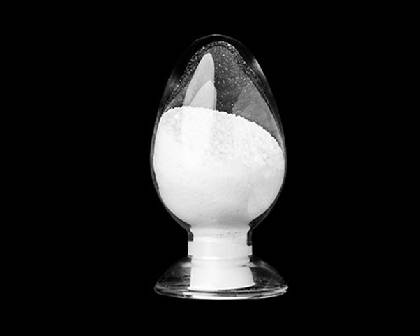Zinc Chloride not only serves as the main salt to provide zinc ions, but is also a conductive salt itself, which increases the conductivity of the plating solution. Its high content, low resistance, and low cell voltage will save electricity. Similarly, the increase of the zinc chloride content allows the upper limit of the current density to be increased. A higher current density can be used to increase the deposition speed and production efficiency. The plating time can be shortened when the thickness of the galvanized layer remains unchanged, and metal impurities can also be reduced. However, if the content is too high, the coating has coarse crystals, the coating is rough, and the throwing ability becomes poor.

Zinc Chloride
When the content of Zinc Chloride Anhydrous is insufficient, it will cause concentration polarization on the cathode. A certain amount of concentration polarization is good; but if the concentration polarization is too large, it will cause too many electrons because zinc ions cannot be obtained. However, abrupt accumulation on the plated parts, especially at the corners where the current density is larger, causes the coating to burn. In order to prevent scorching, the current density has to be reduced, but it will inevitably reduce the production efficiency and the throwing ability of the plating solution, making it difficult to obtain qualified plating for complex plating parts. Therefore, under normal circumstances, the zinc chloride concentration during barrel plating is lower than that during rack plating, and the zinc chloride content is low, which is beneficial to improve the dispersion and coverage of the plating solution.
Within the allowable concentration range of zinc chloride, in order to obtain a good coating, it must be matched with the temperature of the plating solution. Under normal circumstances, zinc chloride should take the upper limit in winter; zinc chloride should take the lower limit in summer. The solubility of the zinc plate of the anode plate is related to the pH and temperature of the plating solution. Generally, the pH is low and the temperature of the bath is high, and the zinc plate dissolves faster; in general, as long as sufficient anode area is maintained to maintain the plating solution For the concentration of zinc ions, add as little or no zinc chloride as possible.
Among the raw materials for electroplating, there are still many problems with the quality of zinc chloride. The main reason is that Zinc Chloride Manufacturers have not removed copper and lead impurities. Therefore, when purchasing zinc chloride, you must purchase branded ones and go through the Hull cell experiment. Generally good zinc chloride has a white crystalline structure, and deliquescent is also used. Otherwise, gray or gray zinc chloride should not be used. Usually, the anode zinc plate should be checked frequently to maintain sufficient anode area, provide zinc ions, and add zinc chloride as little as possible. If you want to add zinc chloride, you should first add zinc chloride to dissolve it, and add an appropriate amount of zinc powder, stir and filter thoroughly before adding it. Under normal circumstances, you can add half of the tap water to the spare tank, then add half of the analytical pure hydrochloric acid, and put in the zinc plate head that usually has insufficient anode area to dissolve it. According to theoretical calculations, 1 mol of metallic zinc requires 2 mol of hydrochloric acid, which means that 65.4 g of metallic zinc requires 209 g of 35% concentrated hydrochloric acid, and about 1 kg of metallic zinc requires 3.2 kg of 35% hydrochloric acid. Adding zinc chloride in this way can not only supplement zinc chloride, but also adjust the pH, and the remaining galvanized plate heads will not be wasted.
Add.: Room 508, Sandhill Central, No.505 Zhangjiang Road, Pudong, Shanghai 201210, China
Tel.: +86 21 6105 7428
E-mail: info@coastalzinc.com
Website: www.coastalzinc.com
Copyright © Dongtai Coastal Zinc Industry Group Co., Ltd. All Rights Reserved | Sitemap Powered by 